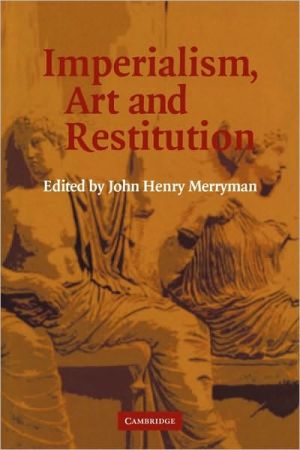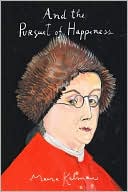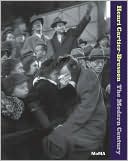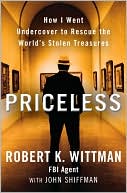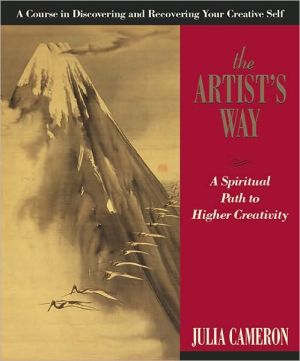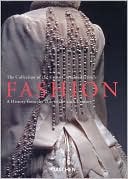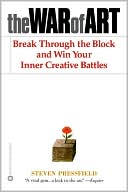Imperialism, Art and Restitution
The issue of returning art and cultural property removed from explored or conquered lands by Americans and Europeans is an unresolved problem. This book is about the return, or not, of works of art and antiquity taken during the Age of Imperialism and now held in museums and private collections. Arguments put forth by the states seeking return or restitution for lost art treasures and meaningful cultural icons are pitted against conservator interests who maintain that these art treasures and...
Search in google:
This book is about whether or not great works of art should be returned.
\ Cambridge University Press\ 0521859298 - Imperialism, art and restitution - Edited by John Henry Merryman\ Excerpt\ \ INTRODUCTION\ John Henry Merryman1\ This book is about the return, or not, of great works of art and antiquity that were taken from their sites during the Age of Imperialism2 and are found today in Western museums. That this topic is alive and hotly contested today reminds us that old art grievances do not die; they rankle and smolder and, from time to time, conflagrate.\ The Elgin Marbles3 are the most famous example, but there are thousands of others. The Louvre and other French museums are filled with paintings and sculptures “acquired” by Napoleon’s forces during his Northern and Italian campaigns and with extensive antiquities collections (including a metope, a frieze slab and assorted fragments from the Parthenon and the Code of Hammurabi). The British Museum contains much more of antiquity than the Elgin Marbles: metopes from Selinunte, great collections of Babylonian and Assyrian antiquities, Benin bronzes, and so on and on. The Nefertiti bust from Egypt, the Pergamon Altar from Turkey and the Ishtar Gate from Mesopotamia in the State Museums in Berlin; the Rosetta Stone from Egypt in the British Museum; Schliemann’s Trojan and Mycenean treasures, formerly in Berlin and now in the Pushkin Museum inMoscow; the art and antiquities in the Staatlichen Kunstsammlungen in Munich; the extensive collections in the Metropolitan, Brooklyn, Boston and Cleveland museums, the Art Institute of Chicago and the Asian Art Museum of San Francisco; relics of the great cultures of South and Southeast Asia; vast collections of art from the peoples of Africa, the Pacific Islands and the Americas in many of the same museums – the list is very long.\ The museums presently holding such objects strongly prefer to keep them, while nations of origin typically want them returned. Since the end of World War II, much of the public discourse on the question has strongly favored the source nations. A Director of the United Nations Educational, Scientific, and Cultural Organization (UNESCO) has published an impassioned appeal for return.4 A result-oriented UNESCO committee, the Intergovernmental Committee for Promoting the Return of Cultural Property to Its Countries of Origin or Its Restitution in Case of Illicit Appropriation (UNESCOICPRCPCORCIA, for short), provides a forum for the introduction of requests for return and for mediation of differences.5\ During the same post–World War II period, the museums’ side of the discourse has been scarcely audible, and the question whether there might be good reasons why museums should retain cultural objects, rather than return them to states of origin, has received comparatively little attention in public discussions about displaced art and antiquities.6 In 2003, however, a joint statement released by eighteen major museums in the United States and Europe entered the discourse and made consideration of museums’ claims for retention less easy to ignore.7\ A major difficulty in discussing proposals for return is that the topic lacks definition and structure. A history of art imperialism has yet to be written. The bases for retention or return of artworks have yet to be clarified and refined. There is little agreement on the terms of discourse. Much of the debate is carried on at a level of abstraction and generality that washes over important factual and logical distinctions. No thoughtful person would seriously argue that everything should be returned or that everything should be retained, but there is little agreement on the criteria for deciding whether a particular object presently in the collection of a certain museum should be returned or kept, or whether some other disposition of the object is desirable. The dialog is accordingly more often one of assertions than reasons. This book is an effort to move the discussion to a more fruitful level. We begin with history.\ ART IMPERIALISM: A ROUGH MAP\ This is a brief and sketchy history of art imperialism and some of the forms it has taken, specifically aggression, opportunism, partage and accretion. Of these, aggression has the longest and richest history.\ Aggression\ The Greek myth of Jason and the Golden Fleece illustrates the aggressive acquisition paradigm. As readers will recall, King Pelias of Iolcus sent Jason and the Argonauts to Colchis, the realm of King Aeetes, to seize the Golden Fleece. By a combination of force and artifice, Jason and his band of heroes invaded Colchis, found the Golden Fleece, overcame its guardians and seized and made off with it. This was an early example of aggressive acquisition of cultural property.\ Aggressive art imperialism became institutionalized under the Romans, beginning with the looting of cultural property by Roman forces in the sack of Veii, “the richest and most powerful city of the Etruscan nation,” in 396 B.C.8 After the victory over Pyrrhus in 275 B.C., according to Florus,9 “if you looked at the [victory] procession you would have seen richly adorned statues of gold and charming Tarentine painted panels.” Pliny records the reproach of Metrodoros of Skepsis that “the people of Colsinii were conquered for the sake of two thousand statues.”10 Plutarch wrote that after the defeat of Mithridates, the Roman procession of L. Lucullus paraded “a large gold statue of Mithridates himself, six feet high, a long shield set with stones, twenty loads of silver vessels.11 Pollitt records many other examples. They suggest that among the many factors that determined the Roman course of empire, the prospect of rich art loot was a significant consideration. The art was desired for itself but also for its role in political triumphalism: the practice of prominently displaying loot on the return to Rome in order to stimulate public admiration for the generals and their legions and public approval and support for the imperial enterprise. Many of these triumphal objects were displayed in the Roman Forum, which became the world’s first great outdoor art museum.\ The same pattern was followed in the Eastern Empire. The Hippodrome of Constantinople was ornamented with antiquities, including many that were the spoils of military victories:\ Of the antiquities brought to the Hippodrome, images of victory were by far the most common. Within this general category, some monuments may be viewed as generic victory dedications, others as commemorative of military triumphs, and still others as exemplars for Hippodrome competitors....spolia had the potential for enormous symbolic import....In the case of works of art, the more ephemeral issues of civic pride and cultural identity were often at stake. This was the case, for example, with the Lysippan Herakles. From the moment of its creation, the colossal bronze was synonymous with Tarentum, becoming both the focus and the emblem of the city’s pride. Its removal to Rome in the aftermath of the city’s conquest was, therefore, no idle act of plunder. Fabius Maximus, the general in charge of the campaign, must have been aware that the transport of the beloved Herakles to Rome would cap the city’s sense of humiliation and degradation. It was tantamount to dragging the city away in chains. Conversely, at Rome, the display of the Herakles would have proclaimed the reality of Roman expansion and the force of her dominion.12\ The Roman style of aggressive art acquisition was revived during the Crusades. “In Venice, as in Byzantium, the parade of booty was a potent vehicle of political triumphalism.”13 The cathedral of San Marco was greatly enriched by spoils from the Fourth Crusade:\ The Venetians had played a key role in the complex series of events that diverted the Fourth Crusade from its original goal in the Holy Land and that culminated in the conquest of Constantinople. Their reward was commensurate....The resplendent adornment of the façades of the church of the city’s patron saint was conceived as a triumphant declaration of the Serenissima’s new status as a great power in the Mediterranean world. The link between the new decoration and the conquest of 1204 is direct and concrete, for the façades incorporate numerous spoils carried off from Constantinople. It is widely assumed that this is the manner in which many of the columns, revetment panels, and works of sculpture were acquired....Of course, the most celebrated of all the prizes brought back from Constantinople is the team of four gilded horses.14\ There are obvious parallels between the Golden Fleece myth, aggressive Roman art looting and its equivalent in the Crusades and Napoléon’s exactions of works of art for the Musée Français (later to become the Louvre) during his first Italian Campaign in 1796–99. The planning for that extended plundering enterprise began in Paris, where “as early as October 16, 1794, the Commission temporaire des arts had appointed a subcommittee of four members to compile full information concerning works of art and science to be found in countries which the republican armies were expected to invade.”15\ Accompanied by commissioners armed with these lists, Napoléon exacted huge concessions of works of art from the Italians, formalizing many of them as “reparations” in the terms of armistice treaties imposed on the losers. Thus the Duke of Modena surrendered forty-nine pictures; Parma another forty-seven; Milan twenty-five; Venice its famous bronze horses, the lion from St. Mark’s, sixteen pictures and other treasures; and so it went. The list is long, and at one time Napoléon boasted, “We have stripped Italy of everything of artistic worth, with the exception of a few objects in Turin and Naples!”16\ Although waging aggressive war and appropriating the victim’s art treasures did not violate then-prevailing international law, the French plunder of Italian art excited strong feelings. Poets declaimed and intellectuals argued. Some emphasized the benefit to a larger public of mounting and publicly displaying so great a concentration of important works of art that had formerly been widely dispersed, often among private holders, and visible only to the few. Many French defended their behavior on a variety of grounds: compensation for the blood and toil of French soldiers; the cultural superiority of France, which made it only right that great art be taken and kept there; if France did not “give a home” to Italian cultural treasures they would be acquired by England or the tsar through purchase; they had been ceded to France in treaties and they were now legally French; and so on. Others referred to the French actions as those of “a band of practiced robbers” and “hordes of thieves.”17\ The British Punitive Expedition against Benin in 1897 provides another well-known example of colonialist aggression linked with plunder of art objects, in this case the famous Benin bronzes, a collection of more than a thousand brass plaques from the royal palace of the Kingdom of Benin. They were seized by a British force and given to the British Foreign Office. Around two hundred of these were then passed on to the British Museum, while the remainder were divided among a variety of collections.18\ Systematic art looting on a much larger scale was carried out by the Third Reich in World War II. They began with the wholesale appropriation and sale or destruction of so-called degenerate or depraved art within Germany itself. (Their working definition of degenerate art – entartete Kunst – was broad enough to include works by many of the best contemporary artists, works by Jewish artists, and works in Jewish collections.)19 As the German armies invaded and occupied other nations this policy was extended, first to the property of Jews and then indiscriminately to privately and publicly held works that Nazi party officials, principally Hitler and Göring, directed to be seized and transported to Germany. Hitler’s stated purpose was to establish a major art museum in Linz, Austria, to honor his mother. Göring was interested in building his own already imposing collection of valuable works.\ The German art-looting operation was placed in the hands of a “special unit” (Einsatzstab) directed by another high Nazi official, Alfred Rosenberg. The Einsatzstab Reichsleiter Rosenberg, which was separate from the German military and uninhibited by the military's policy against art looting, was ruthless, voracious and efficient. The quantity of material taken and shipped to Germany was enormous. Rosenberg produced an illustrated catalog of thirty-nine volumes, with about twenty-five hundred photographs of works seized. If the entire body of loot had been photographed and cataloged it would have run to about three hundred volumes.20\ The international law of war, which had not prohibited aggressive military art-looting campaigns like that of Napoléon in Italy in the late eighteenth century or the British Punitive Expedition in Benin in 1897, had radically changed by the time of the Nazis’ enterprise. Their seizure of works of art in the occupied countries violated an international law prohibition on the confiscation of private property by aggressive occupying powers. This was, by 1939, a customary international law norm that had been formalized in Art. 46 of the 1907 Hague Convention (Hague IV) on the Laws of War and in the Kellogg-Briand Pact of 1928,21 to both of which Germany was a party.\ At Nuremberg, the German wars of aggression were characterized as “crimes against peace” and art seizures in the occupied countries as “war crimes.” Rosenberg was charged at Nuremberg with “the looting and destruction of works of art.” He was found guilty of this “war crime,” as well as “crimes against peace” and “crimes against humanity,” and was hanged. Rosenberg’s fate symbolizes the end of an era – a very long era – during which aggressive art looting was often deplored but was not considered a violation of international law.\ Opportunism\ The Elgin Marbles were acquired not by aggression but by what might be called opportunism. In preparing for his assignment as Minister to the Sublime Porte, Elgin originally intended only to take back to Britain drawings and molds of Classical Greek antiquities, and he enlisted artists and technicians to go to Athens to carry out this plan. The possibility of actually acquiring such works themselves arose after he arrived in Constantinople. The British defeat of Napoléon’s forces in Egypt was a significant contributing cause. The story is told in William St Clair’s excellent book22 and is supplemented in his chapter in this volume. The debate about the legality and morality of the removals continues, and there are more or less respectable arguments on all sides.23 The separate question of whether the Marbles should today be returned from the British Museum in London to Athens is the topic of Chapters 4 and 5, by Mr. St Clair and the writer.\ Partage\ The University of Chicago’s Oriental Institute Museum is the most important center for the study of the ancient Near East in the United States. Its Near East collection includes 120,000 objects, most of which were excavated by the University of Chicago in the early decades of the last century. The works were acquired under an arrangement known as partage, by which a foreign archaeological team and the source nation would equally divide any objects found during excavations. Partage was long a standard practice in international archaeology, providing a significant flow of artifacts to European and American museums.\ Since the midtwentieth century, as one consequence of the growth of cultural nationalism in source nations, the practice of partage has declined. According to Oriental Museum Director, Karen Wilson; “Very little has been added to the collection since Iraqi laws put an end to ‘partage’ around 1970 and nothing of significance has been added in the last 15 years.”24 Dr. Cuno makes a plea for the resumption of partage in Chapter 1. The portrait bust of Queen Nefertiti in Berlin was acquired by partage by a privately financed German excavation team working in Egypt in 1912. The case is discussed in Chapters 6 and 7 by Professor Siehr and Dr. Urice.\ Accretion\ In the long (since 1533) and sometimes dishonorable history of America’s relations with American Indian nations they have been variously treated as sovereigns whose relations with the colonists were governed by treaties, as belligerent outlaws, as pagan savages whose religion and customs should be repressed, as dependent beneficiaries of a federal trust, as anomalous foreigners who should be assimilated to white society, and currently as U.S. citizens who, by law, are entitled to large areas of self-government and cultural self-determination.\ During much of that history quantities of American Indian art and artifacts, including ceremonial and religious objects, gradually but with seeming inevitability left their Indian homes and found their ways into private and museum collections. Some were acquired from their holders as ceremonial gifts or by barter or purchase on fair terms, but others were acquired in a variety of less respectable ways. Accretion of this kind has occurred elsewhere. A similar process of erosion of the store of cultural objects in the hands of colonialized peoples and accretion of such objects in the hands of the imperial powers can be observed in the histories of colonial regimes in other parts of the world and is evidenced by the collections in private and museum collections in the capitals of former empires.\ With the enactment of the 1991 Native American Graves Protection and Repatriation Act (NAGPRA) the accretion of Native artifacts in non-Native museums and private collections was abruptly reversed. Hundreds of U.S. museums were required to inventory their holdings of American Indian objects and, on proper request, to return them. Thus began what may be the greatest art restitution project in history. The experience under NAGPRA reveals that the decision to return works of art to the cultures that produced them creates its own interesting problems and legitimate concerns, which are discussed by Professors Brown, Bruchac, and Thomas in Chapters 8 and 9.\ PRINCIPLES\ How do we, and how should we, think about questions of return? What kinds of principles should guide decisions about claims from source nations for the restitution of works of art and other cultural objects acquired during the Age of Imperialism? In the literature on restitution, one can identify appeals and recourse to principles of nationalism, legality, morality, preservation, truth and access. That list is quite possibly incomplete, and some readers may have identified others, but it includes the principles that most commonly appear in the literature concerning restitution.\ Nationalism\ One way of thinking about works of art and antiquities is as parts of a national cultural “patrimony’ or “heritage.”25 This implies the attribution of national character to cultural objects, independently of their location or ownership, and legitimizes demands for their “repatriation.” Source nations and their supporters frequently invoke cultural nationalism, and several UNESCO instruments give it significant legal support. A common argument for return of the Elgin Marbles to Athens, made most effectively by the dramatic actress Melina Mercouri when she was the Greek Minister of Culture, is that they belong in Greece because they are Greek.\ \ \ \ \ © Cambridge University Press
1View from the universal museum15AppDeclaration on the importance and value of universal museums342From global pillage of pillars of collaboration373Museums as centers of cultural understanding474Imperial appropriations of the Parthenon655Whither the Elgin marbles?986The beautiful one has come - to return : the return of the bust of Nefertiti from Berlin to Cairo1147The beautiful one has come - to stay135App. IThe bust of Nefertiti : an annotated bibliography166App. IIA new translation of selected Egyptian antiquities laws (1881-1912)1758Nagpra from the middle distance : legal puzzles and unintended consequences1939Finders keepers and deep American history : some lessons in dispute resolution218
